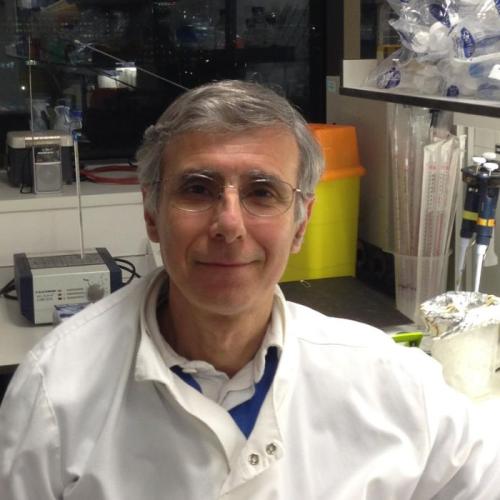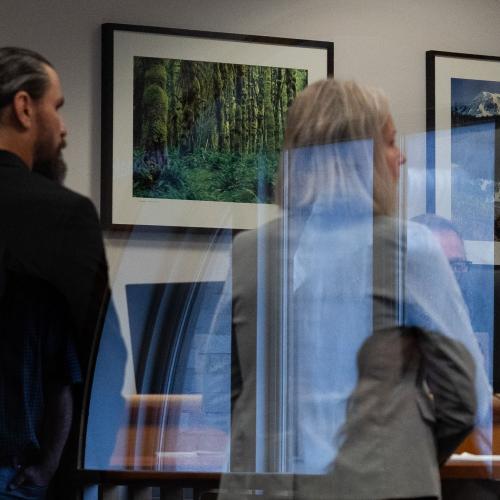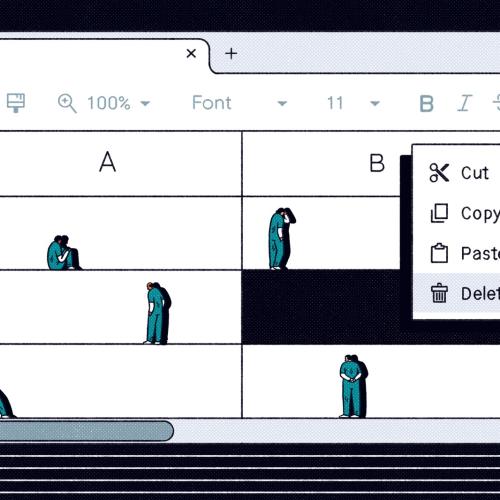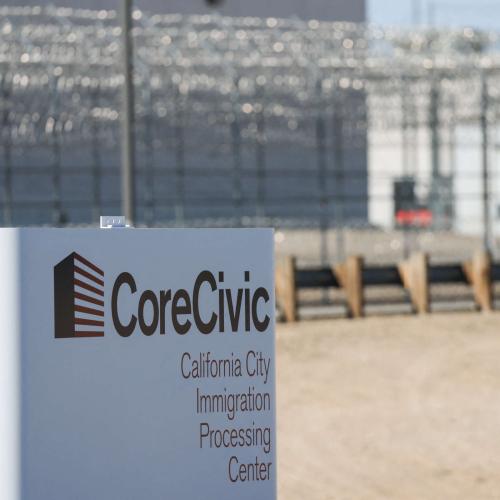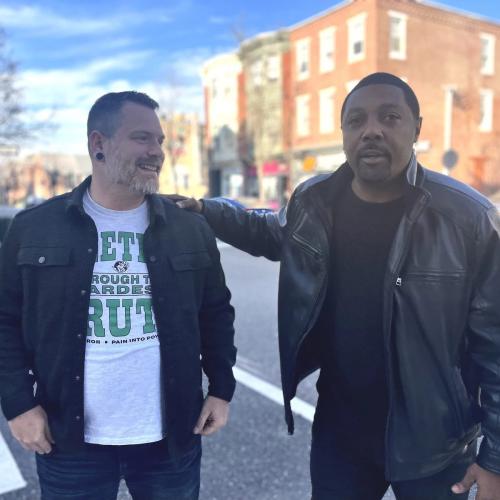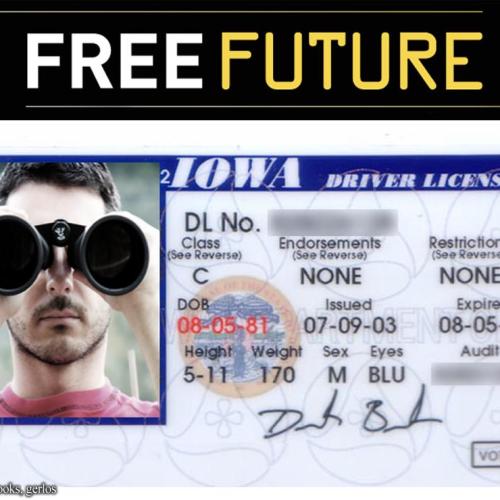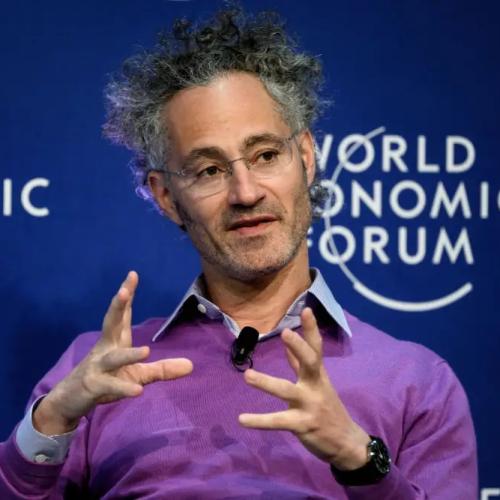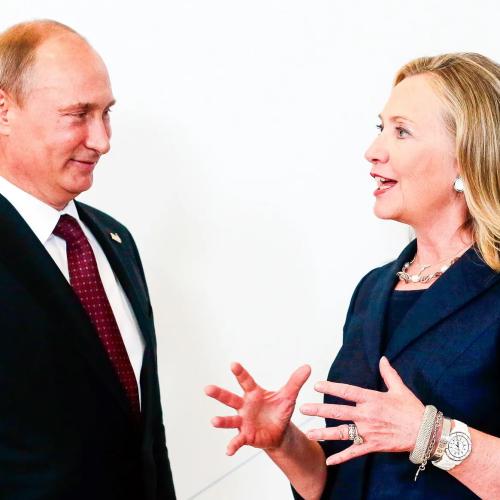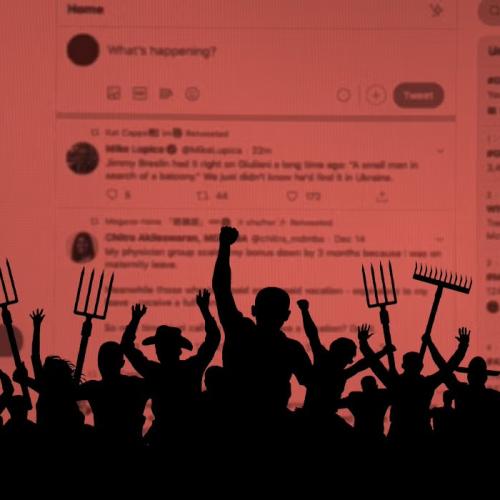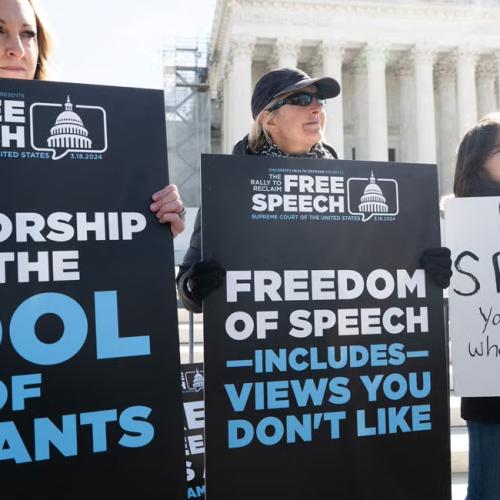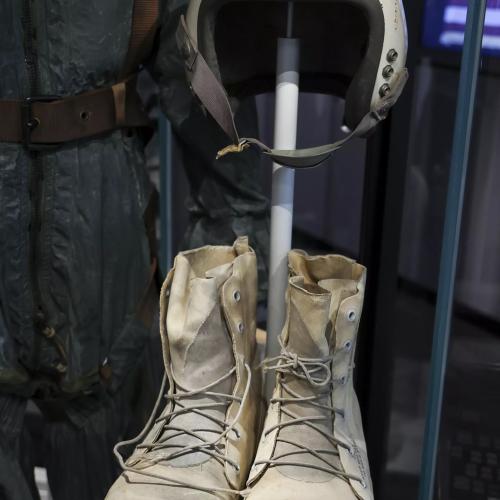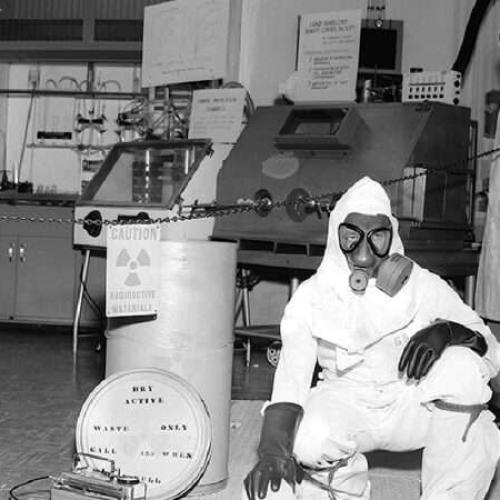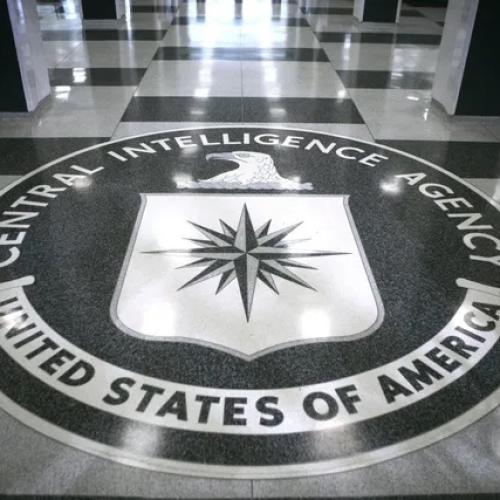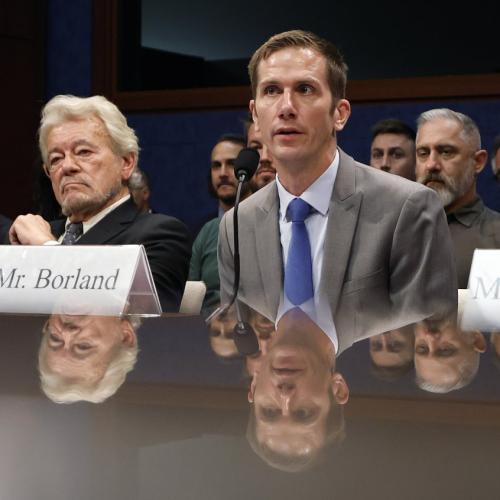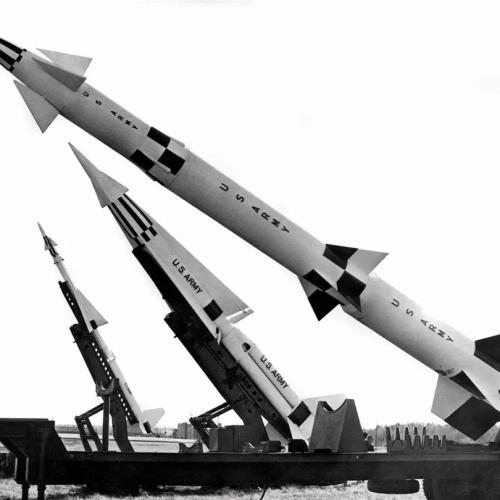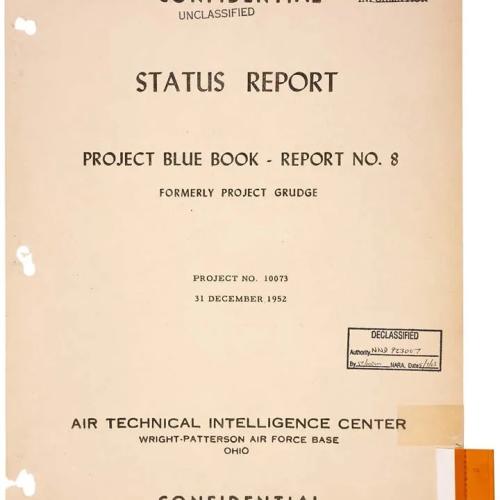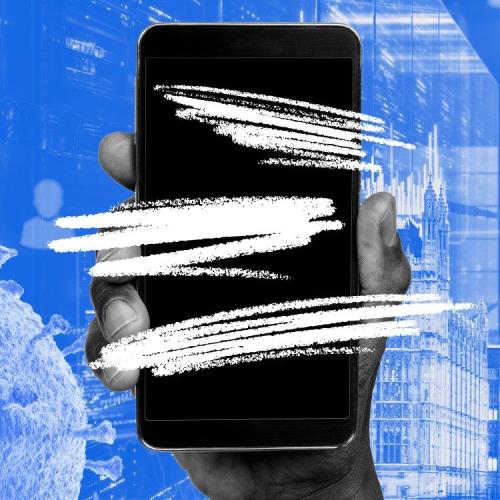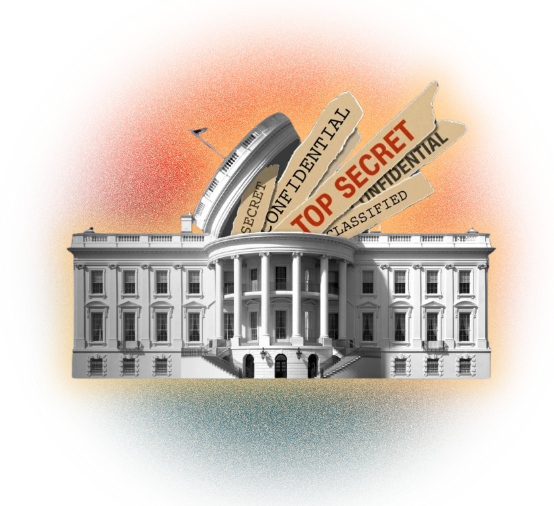Inspirational News Stories
Below are key excerpts of some of the most inspiring news articles from reliable news media sources. If any link fails to function, a paywall blocks full access, or the article is no longer available, try these digital tools.
For further exploration, delve into our Inspiration Center.
Witold Bialokur...can run 10 kilometers, or 6.2 miles, in less than 44 minutes. While Mr. Bialokurs performance would be the envy of most young men, he is not young. Mr. Bialokur is 71. It is one of the persistent mysteries of aging, researchers say. Why would one person, like Mr. Bialokur, remain so hale and hearty while another, who had seemed just as healthy, start to weaken and slow down? Rigorous studies are now showing that seeing, or hearing, gloomy nostrums about what it is like to be old can make people walk more slowly, hear and remember less well, and even affect their cardiovascular systems. Positive images of aging have the opposite effects. The constant message that old people are expected to be slow and weak and forgetful is not a reason for the full-blown frailty syndrome. But it may help push people along that path.
Physicists in Denmark have teleported information from light to matter bringing quantum communication and computing closer to reality. Until now scientists have teleported similar objects such as light or single atoms over short distances from one spot to another in a split second. But Professor Eugene Polzik and his team at the Niels Bohr Institute at Copenhagen University in Denmark have made a breakthrough by using both light and matter. "It is one step further because for the first time it involves teleportation between light and matter, two different objects. One is the carrier of information and the other one is the storage medium," Polzik explained in an interview on Wednesday. The experiment involved for the first time a macroscopic atomic object containing thousands of billions of atoms. They...teleported the information a distance of half a meter but believe it can be extended further. "Teleportation between two single atoms had been done two years ago by two teams, but this was done at a distance of a fraction of a millimeter," Polzik, of the Danish National Research Foundation Center for Quantum Optics, explained. "Our method allows teleportation to be taken over longer distances because it involves light as the carrier of entanglement." Quantum entanglement involves entwining two or more particles without physical contact.
The man behind the latest YouTube sensation has spoken out for the first time about his global cuddling controversy. Serial hugger Juan Mann describes the free hugs he hands out...as fast-food emotion. His cuddling campaign received an international dose of publicity today, after a clip showing his public displays of affection won a coveted front page spot on the video sharing website. An American television audience of millions also watched him at work, when the video was broadcast on the prime-time breakfast program Good Morning America yesterday. Today, the hugger was at it again, brandishing his "free hugs" sign in the busy pedestrian thoroughfare, and having quite a few people take him up on his offer. "It's a way to make people smile," Mann said. "For every person who gets a hug, you see five walk past with a smile on their face." But his efforts to spread the love became a little too popular for some people's liking, according to a blurb on the YouTube video, which said: "As this symbol of human hope spread across the city, police and officials ordered the Free Hugs campaign BANNED." Undeterred, Mann collected more than 10,000 signatures on a petition he presented to the City of Sydney council. Demands for a halt to the hugs petered out shortly after, and the end of the clip shows Mann hugging an official. City worker Elly Mitchell, who handed out a few free hugs on her lunch break today, said she was inspired to organise [an] event after seeing the video online. "We're going to hug the city," Ms Mitchell said.
Note: If you haven't seen this powerfully inspiring four-minute video clip, join the many millions who have by watching it on this webpage. The free hugs movement spread rapidly around the world! See this fun video and this inspiring one for great examples. Then check out several other short, deeply inspiring videos.
At Sheldon High in Sacramento, Calif., 14-year-old Ben Underwood is a freshman like all the rest -- well not exactly like all the rest. In his first week at school, a lot of people at the school haven't guessed that Ben has a secret. You probably couldn't figure it out watching him in combat at karate class -- or hitting his mark in a pillow fight -- or zipping down the street on his roller blades. But in class, you'll notice that Ben takes his notes in Braille. He is totally blind. His piercing brown eyes are made of plastic. He says he lost his [sight] two weeks before his third birthday. Ben had cancer in both eyes. But he discovered a way to beat his blindness. When he was about 6, he started "clicking," and quickly realized that the sound he made with his tongue bounced off things around him, giving him an idea what was there. Ben has much the same talent as the dolphins he visited at Sea World: the ability to use echolocation -- returning sound waves -- to sense his surroundings. His mother, Aquanetta Gordan, insists he should have every opportunity -- but no pity. "To society he's blind, but that doesn't make him handicapped. He just can't see." Aquanetta has always told Ben he can do anything. "Once he said to be, 'Mom, I wish I could see.' And I said, 'But Ben, look at what you can do' I said, 'If we had a blackout right now, everybody would have to follow you.'" The more Ben manages to be ordinary, the more it's clear that he's extraordinary.
Note: See the amazing three-minute video on this story at the link above (after required commercial).
[On] the Web site porkbusters.org is a quote attributed to former Senate Majority Leader Trent Lott: "I'll just say this about the so-called porkbusters. I'm getting damn tired of hearing from them." Sens. Ted Stevens (R-Alaska) and Robert Byrd (D-W.Va.) are probably damn tired of hearing from them too. The porkbusters led a pack of bloggers who outed the two senators for bottling up a bill meant to help the public track how its tax dollars are spent. The measure would create a searchable online database of federal grants and contracts. An unnamed senator...was blocking that bill from coming to the floor. Under an arcane Senate rule, any member who has concerns about a bill can block it--anonymously. When the porkbusters learned about the so-called "secret hold," they issued a call for bloggers to contact their own senators and demand to know: Are you the anonymous blocker? Readers at TPMmuckraker.com and GOPprogress.com joined in, and within days they had denials from 97 senators. That's when Stevens decided to "fess up." The bloggers still weren't satisfied. By Thursday, Byrd was the only senator who continued to duck the question. Noting that Byrd's "penchant for pork would probably win him the Pork Crown if he weren't saddled with minority status," TPMmuckraker pressed for an answer. By midafternoon, Byrd had admitted he placed a hold on the bill--and said he has now released it. When they were caught, Stevens and Byrd offered lots of blather about why they were preventing taxpayers from finding out how their money is spent. It's a good day for taxpayers and the bloggers who got to the truth. And a bad day for secrecy in the U.S. Senate.
These dynamic and personable businessmen from Dublin insist that they have found a way of producing free, clean and limitless energy out of thin air. So, as they prepare to demonstrate this wonder of science to me...I feel all the excitement of Christmas Day. There is a test rig with wheels and cogs and four magnets meticulously aligned so as to create the maximum tension between their fields and one other magnet fixed to a point opposite. A motor rotates the wheel bearing the magnets and a computer takes 28,000 measurements a second. And when it is all over, the computer tells us that almost three times the amount of energy has come out of the system as went in. In fact, this piece of equipment is 285% efficient. "We couldn't believe it at first, either," says McCarthy, chief executive of the company. "We wanted to improve the performance of the wind generators...so we experimented with certain generator configurations and then one day one of our guys...came in and said: 'We have a problem. We appear to be getting out more than we're putting in.'" That was three years ago. Since then, McCarthy says, the company has spent 2.7m developing the technology. Until their claims have been assessed by the jury, McCarthy says they won't be accepting any investor offers. So if this is a hoax, it would appear not to be a money-making scheme. The Economist ad alone cost 75,000. "We expected stick, and we're getting it already. We've had a lot of abusive emails and telephone calls -people telling us to watch our backs"
Note: To understand how this is possible, see http://www.WantToKnow.info/newenergysources
Sacramento's Solar Cookers International, will take the global stage Friday in Florence, Italy. The nongovernmental organization, which is dedicated to saving the world with solar power, will receive an award from the World Renewable Energy Congress. The secret of the group's success is the "CooKit," a 3-by-4-foot piece of cardboard lined with aluminum foil that harnesses the sun's rays to cook food and pasteurize water. About 90,000 "CooKits" are heating up in Africa, where they are being manufactured and sold for $8 or $9. The group has helped introduce 500,000 solar cookers to 25 nations where people spend half their $1-a-day wages to buy firewood to cook their meals, said Bob Metcalf, a microbiologist who co-founded the group in 1987. Solar cookers allow them to spend that money on food instead of firewood, said Metcalf, who teaches at California State University, Sacramento. Metcalf says he hopes the award will get him 30 minutes with Bill Gates or some other investor to spread the gospel of the CooKit, which could be used by "2.5 billion people today" who rely on wood, charcoal or animal dung to cook meals. Metcalf also invented the Water Pasteurization Indicator -- a reusable sealed test tube with wax that melts when food or water has been pasteurized at 149 degrees Fahrenheit. "It takes about 90 minutes in the sun," he said. For more information, go to www.solarcookers.org.
Note: For how to easily help several families a year pull out of poverty in third world countries, see http://www.WantToKnow.info/051023microcredit
For years, scientists have looked at the placebo effect as just a figment of overactive patient imaginations. Sure, dummy medications seemed to curb epileptic seizures, lower blood pressure, soothe migraines and smooth out jerky movements in Parkinson's -- but these people weren't really better. Now, using PET scanners and MRIs ... researchers have discovered that the placebo effect is not "all in patients' heads" but rather, in their brains. New research shows that belief in a dummy treatment leads to changes in brain chemistry. Says Dr. Michael Selzer, professor of neurology at the University of Pennsylvania School of Medicine, "After pooh-poohing this for years, here are studies that show that our thoughts may actually interact with the brain in a physical way." New insights into how placebos work may even help scientists figure out how to harness the effect and teach people to train their own brains to help with healing. Studies in depressed patients ... have found that almost as many are helped by placebo treatments as by actual medications. Researchers are just starting to appreciate the power that the mind can have over the body. Part of what goes into the brain's interpretation is expectation. By changing the expectancy and bumping up the placebo response we might be able to ultimately find a way to provide sustained therapy for chronic pain.
A man who claims to have developed a free energy technology which could power everything from mobile phones to cars has received more than 400 applications from scientists to test it. Sean McCarthy says that no one was more sceptical than he when Steorn, his small hi-tech firm in Dublin, hit upon a way of generating clean, free and constant energy from the interaction of magnetic fields. 'It wasn't so much a Eureka moment as a get-back-in-there-and-check-your-instruments moment, although in far more colourful language,' said McCarthy. But when he attempted to share his findings, he says, scientists either put the phone down on him or refused to endorse him publicly in case they damaged their academic reputations. So last week he took out a full-page advert in the Economist magazine, challenging the scientific community to examine his technology. McCarthy claims it provides five times the amount of energy a mobile phone battery generates for the same size, and does not have to be recharged. Within 36 hours of his advert appearing he had been contacted by 420 scientists in Europe, America and Australia, and a further 4,606 people had registered to receive the results.
Steorn has now posted a slick, five-minute video that features interviews with company CEO Sean McCarthy as well as the company's marketing director. For more background, see our earlier discussion. The video's slick, and not too heavy on scientific detail. But it's worth checking out. It does begin to explain the company's motivations for choosing to issue a challenge in the Economist. McCarthy: "The first roadblock is science. With the academic community, it might take five to seven years before being able to get to a consensus position. As a business, that makes absolutely no sense." The video explains that a "quiet" campaign was plan A. The direct marketing approach currently being taken is Plan B. McCarthy: "The claim does rail against so much thinking from ordinary people. We have to fight public opinion, we have to fight the scientific community and we have to fight the energy industry. We couldn't pick a worse battleground."
Note: For lots more on the many who have developed similar discoveries and how they have been either bought out or shut down, click here.
Several small, independent automakers are juicing up electric cars. Among the companies trying to lead the charge: Tesla. Tesla Motors...is taking orders for a $100,000 electric high-performance sports car...billed as capable of a Ferrari-like zero to 60 mph in four seconds. The car was designed in California but will be built by Lotus in Great Britain. Its sophisticated lithium-ion battery will allow a range of 250 miles on a single charge and a top speed of 130 mph. Wrightspeed...hopes to produce its own, $100,000 high-performance car within two years. It will have about a 200-mile range. Ian Wright, who heads Wrightspeed...says the new breed of electric cars could have three times the energy efficiency of gas-electric hybrids. "You can build something that's seriously fast and a lot of fun to drive." Zap. At the other end of the performance spectrum...Zap last month started selling a three-wheel electric "city car" imported from China that it says is capable of a top speed of 40 mph. Priced at $9,000, the Xebra has a range of about 40 miles. Tomberlin Group...plans to sell three versions of electric cars. Prices will range from $5,000 for E-Merge E-2 to $8,000 for the four-seat Anvil. The electric revival comes as...Who Killed the Electric Car? has started playing in theaters. The movie alleges that big automakers, oil companies and the government sank promising electric-car technology. The film singles out General Motors for...having created a futuristic electric car that became a Hollywood enviro-darling. When leases ran out, GM collected its Saturn EV1s and sent them to the crusher.
Note: I've heard that Who Killed the Electric Car? is an excellent, revealing film. For lots more on why car mileage has not significantly increased since the days of the Model T (which got 25 miles to the gallon), see http://www.WantToKnow.info/050711carmileageaveragempg
At a glittering Los Angeles party, an ambitious new car maker declared the electric car alive and well. The Tesla Roadster, which can go from 0 to 60 mph in 4 seconds doesn't come from Detroit, but from high tech Silicon Valley aiming to do what Detroit couldn't -- make a commercially successful car that doesn't burn gas. "Electric cars don't have to be little, pathetic commuter cars," says Martin Eberhard, CEO of Tesla Motors. "They can be quick and they can be desirable." Eberhard made millions in the computer industry, then convinced other high tech investors like Elon Musk, the founder of PayPal, to put in big money. Musk expects huge rewards if Silicon Valley can break Detroit's grip on the U.S. auto industry. "It's batteries, it's drive electronics, it's electric motors," says Musk. "Those are skills that are present in Silicon Valley and not present in Detroit." There's a quick charger for the Tesla's lithium batteries but the car can be plugged in anywhere. It'll go 250 miles on a single charge -- at a cost the company says, of just 1 cent a mile. Tesla expects to quickly sell its first 100 cars for $100,000 each. But, don't give up. The company also has plans for a car for the rest of us. Tesla promises a less expensive four-door family car within three years. For now, however, it's the rich and famous who are getting a charge out of this electric car, such as Gov. Arnold Schwarzenegger, who tried out the car and had two words to say: "Very Nice."
Note: Don't be surprised if this technology inexplicably disappears as so many others have, like the once heralded 100 MPG Toyota Eco Spirit back in 2002. For lots more reliable information on the suppression of new energy inventions, see http://www.WantToKnow.info/newenergyinformation.
A bold and controversial law that shuts down bars and restaurants after 11 p.m. has turned Diadema, one of Brazil's most violent cities, into an urban model. The law has cut homicides by nearly half and has slashed other crimes by as much as 80 percent after forcing nearly all of the city's 4,800 bars and restaurants in 2002 to stop selling alcohol between 11 p.m. and 6 a.m. Since then, the homicide rate has dropped by 47 percent, traffic accidents by 30 percent, assaults against women by 55 percent, and alcohol-related hospital admissions by 80 percent. "Diadema had a large homicide rate, and we estimated that based on the data they gave us, the intervention prevented about 270 homicides over a three-year period," said Joel Grube...director of prevention research. The law's success has municipalities across Brazil adopting similar measures. At least 120 towns and cities have restricted the hours in which alcohol can be served, and the federal government now offers additional funds for law enforcement to localities that implement such measures. With little federal control over alcohol sales or consumption, closing bars in troubled areas is an effective way to cut alcohol-related problems, said Ronaldo Laranjeira, a Sao Paulo physician who led the joint Brazil-U.S. study of homicide rates in Diadema after the law took effect. "They made a relatively modest intervention that doesn't really cost any money, and they got these dramatic improvements."
White blood cells from mice that are naturally immune to cancer cured tumors in other mice and provided them with lifelong immunity to the disease, researchers reported Monday. The finding indicates the existence of a biological pathway previously unsuspected in any species. A small team of researchers is working to understand the genetic and immunological basis of the surprising phenomenon. Preliminary studies hint at the existence of a similar resistance in humans. Researchers hope that harnessing the biological process could lead to a new approach to treating cancer. But Dr. Zhen Cui of Wake Forest, whose team published the findings in the Proceedings of the National Academy of Science, said he expected rapid replication of the results because the findings were so clear-cut and easily observed. "This is a truly remarkable phenomenon -- and it really needs confirmation from other institutions," he said. The team took white blood cells from the immune mice ... and injected them into mice already carrying a variety of tumors, some of which were extremely aggressive. In every case, the cancers were destroyed, even if the cells were injected at a point distant from the tumor. Healthy tissues were not affected. The mice that received the cells, furthermore, were protected from new tumors for the rest of their lives. The researchers have no idea how the immunity continues.
Note: Why was this not in the headlines and not given a title like "Cancer Cure Found for Mice"? Most major papers didn't even report the story, and an article in the New York Times was titled simply "A Strain of Mice Appears Able to Resist Cancer Cells." Could it be that the power brokers in the medical industry know that a cancer cure would cause huge financial losses for them? For what happened to an incredible scientist in the past who discovered a cancer cure for humans, click here.
A sugar pill, a salt solution, a doctor in a white jacket -- these all have the power to cure as long as the patient believes in their healing qualities. That seems impossible. So what does science say about the elusive placebo effect? Very little research has been done in this area of medicine. The pharmaceutical industry cant profit; after all, they cant make money from sugar pills. It is often forgotten that the effect could help people and shave billions off spiralling health-care costs. If researchers could gain more insight into how the effect works, it would stand as one of the biggest medical breakthroughs in history. Some people are convinced that the effect proves that strength of mind is sufficient to heal the body. Placebos have...proven successful in treating depression, anxiety, stress, warts and ulcers -- sometimes in as many as 60 to 70 percent of the cases. There are...objective effects everyone can measure. Placebo treatments have been shown to lower blood pressure and cholesterol levels as well as improve reaction speeds, pulse rates and immune-system activity. Ultimately, the placebo phenomenon points to a strange paradox in modern medical science. As soon as an alternative-health treatment proves successful, it is dismissed as the placebo effect. It works only because people believe in it. Yet this explanation appears to contradict one of the foundations of medical science, which stresses that the mind and body are separate, therefore ruling out the possibility of healing through belief.
Note: For ideas on why the placebo effect has rarely been studied, see our two-page health cover-up summary at http://www.WantToKnow.info/healthcoverup
Stanford University and UC Berkeley have joined a trend among the nation's elite universities and are developing centers dedicated to fighting poverty worldwide as economic inequalities grow ever starker. Both are fledgling efforts aimed at marshalling their respective academic forces...to tackle some of the most vexing and enduring problems facing humanity. A few universities, such as Harvard, have established track records in this arena, but a number of academics believe the trend is accelerating among major universities. Northwestern University and the University of Chicago have been running the Joint Center for Poverty Research since late 1996. Harvard established the Multidisciplinary Program in Inequality and Social Policy a couple of years later. In 2002, the University of Michigan created the National Poverty Center, which is largely funded by the U.S. Department of Health and Human Services. Last year...Princeton University started the Global Network on Inequality. Capitalism...has been immensely successful in generating high-GNP societies, but one side effect has been "massive inequality (that) can be debilitating." Poverty and inequality have always plagued the world, but that doesn't mean universities can't develop new ways of solving the problems, said Stanford's Grusky. "It's time again to think in ways that are utopian...and imagine systems that are different from the ones we have."
Note: For two excellent articles on tackling poverty and how you can make a difference:
http://www.weboflove.org/051023microcredit - Breaking the Cycle of Poverty: Microcredit and Microfinance
http://www.time.com/time/archive/preview/0,10987,1034738,00.html - Time magazine "The End of Poverty"
For 2,000 years Judas has been reviled for betraying Jesus. Now a newly translated ancient document seeks to tell his side of the story. The "Gospel of Judas"...portrays Judas as a favored disciple who was given special knowledge by Jesus -- and who turned him in at Jesus' request. The text, one of several ancient documents found in the Egyptian desert in 1970, was preserved and translated by a team of scholars. It was made public in an English translation by the National Geographic Society. A "Gospel of Judas" was first mentioned around 180 A.D. by Bishop Irenaeus of Lyon, in what is now France. The bishop denounced the manuscript as heresy because it differed from mainstream Christianity. The actual text had been thought lost until this discovery. Christianity in the ancient world was much more diverse than it is now, with a number of gospels circulating in addition to the four that were finally collected into the New Testament, noted Bart Ehrman, chairman of religious studies at the University of North Carolina. Eventually, one point of view prevailed and the others were declared heresy, he said, including the Gnostics who believed that salvation depended on secret knowledge that Jesus imparted. The newly translated document's text begins: "The secret account of the revelation that Jesus spoke in conversation with Judas Iscariot."
I was deployed to Iraq in April 2003 and returned home for a two-week leave in October. Going home gave me the opportunity to put my thoughts in order and to listen to what my conscience had to say. I realized that none of the reasons we were told about why we were in Iraq turned out to be true. Coming home gave me the clarity to see the line between military duty and moral obligation. By putting my weapon down, I chose to reassert myself as a human being. I have not deserted the military nor been disloyal to the men and women of the military. I have not been disloyal to a country. I have only been loyal to my principles. Many have called me a coward, others have called me a hero. I believe I can be found somewhere in the middle. To those who have called me a hero, I say that I don't believe in heroes, but I believe that ordinary people can do extraordinary things. Today, as I sit behind bars I realize that there are many types of freedom, and that in spite of my confinement I remain free in many important ways. What good is freedom if we are afraid to follow our conscience? What good is freedom if we are not able to live with our own actions? I am confined to a prison but I feel, today more than ever, connected to all humanity. Behind these bars I sit a free man because I listened to a higher power, the voice of my conscience.
[AJ] remembers every day and almost every detail of her life. James McGaugh is one of the world's leading experts on how the human memory system works. But these days, he admits he's stumped. McGaugh's journey through an intellectual purgatory began six years ago when a woman now known only as AJ wrote him a letter detailing her astonishing ability to remember with remarkable clarity even trivial events that happened decades ago. Give her any date...and she could recall the day of the week, usually what the weather was like on that day, personal details of her life at that time, and major news events that occurred on that date. Like any good scientist, McGaugh was initially skeptical. But not anymore. "This is real," he says. "In order to explain a phenomenon you have to first understand the phenomenon," McGaugh says. "We're at the beginning."
Note: The human mind and spirit are much more powerful than many scientists might imagine.
It was about 10 seconds long and showed gondoliers rowing in the canals of Venice, Italy, while a Latin-sounding man's voice said: "Your heart is where your treasure is, and you must find your treasure in order to make sense of everything." And then more words appeared on the screen: "Everyday grace: MTV." In late January, MTV, the arbiter of all things hip, quietly launched a campaign of 24 of these little films. They call the campaign "Spiritual Windows." "We wanted to create little, short moments, almost breaths of peace, for the channel," Kevin Mackall, the...senior vice president of on-air promos for MTV explained. "There's a genuine appetite for spirituality these days." According to a little-known poll...53 percent of 18-to-29-year-olds said "religion" was "extremely important" or "very important" to their daily lives. Only 14 percent said religion wasn't important to them at all. One spot, with the tag line "Consume mindfully," shows a Tibetan nun hauling two plastic garbage bags to the curb in front of her Buddhist temple. Then there's "Everyone," with a Chinese dragon dancing...accompanied by a voice-over that says, "We need other human beings to be human." And one of the longer spots...shows the sun setting over a pyramid in Egypt as the Brazilian magical realist author Paulo Coelho's voice announces, "The desert will give you an understanding of the world. How do I immerse myself in the desert? Listen to your heart." Mackall...insists the "Spiritual Windows" are no gimmick. "It really, truly is answering a call from our audience," he said. "Hopefully it's a first step into some other content like this."
Important Note: Explore our full index to revealing excerpts of key major media news stories on several dozen engaging topics. And don't miss amazing excerpts from 20 of the most revealing news articles ever published.













